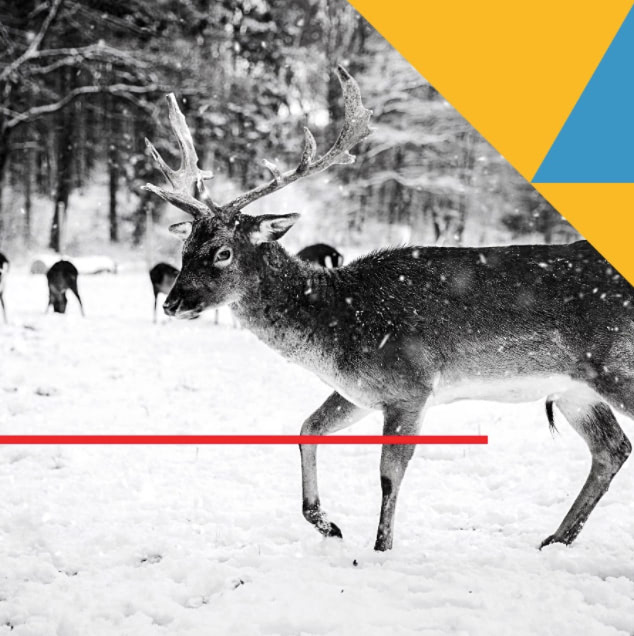How AI is Revolutionizing Santa's Workshop this Holiday Season
If you ever have a chance to interview North Pole Founder and CEO, Santa Claus, don’t mention Amazon. Upon my raising the Seattle-based online retail behemoth, Mr. Claus couldn’t help but scoff. “Please,” he said. “I was delivering packages long before Jeffy was in diapers!”
While the seasonal organization may not be as all-consuming as Amazon, the portly man with the white beard has a point. Since the Middle Ages, the North Pole has been fulfilling its mission to deliver packages to children all over the world.
So how does an organization that’s centuries old continue to innovate?
Well, Mr. Claus will be the first to tell you that old companies can’t always do things the old way, which is why the North Pole has made an ongoing commitment to keeping up with the times — and introducing the latest technology solutions into their operations to make sure they deliver.
“What we’re looking at is a very small [delivery] window.” Mr. Claus explains. “You’ve got between 9 pm — maybe 7 if the kids are younger — and 6 am to get in, get the packages under the tree, and get out. All over the world. It’s a logistics nightmare.”
At first, the organization was completely analog, relying on a veritable army of bookkeepers and bean counters to keep track of every package, every recipient, and thousands of other details to make Christmas — well, Christmas eve — happen.
But as the world changed, and technology evolved, Mr. Claus insisted on operating as efficiently as possible.
“We were one of the first companies to get an IBM 165, right after the US Census Bureau.” he told us, referring to one of the first commercial computers to hit the market. “It took up the size of a room but the missus didn’t want it in the house, so for the first few winters, we were keeping the thing in an empty reindeer bay. Our engineers froze their butts off but it reduced our DCR by 5%.”
DCR is North Pole speak for Disappointed Child Rate — the percentage of children who don’t get what they ask for on any given Christmas. Although Mr. Claus declined to tell us exactly what their DCR rate currently is, several research firms estimate it in the low digits. Not bad for an organization that delivers over eight billion packages in a single night.
The wave of technology adoption continued. In the ‘80s it was personal computers. In the ‘90s, it was the internet. Lately, the North Pole has been getting into Artificial Intelligence.
In 2017, the organization launched its first AI initiative, called ONE HORSE OPEN SL-A.I. Originally, the plan was to deploy a few systems to make it easier to sort the Naughty from the Nice (see below); however, the effort has continued to the present.
Now, the North Pole sees AI in almost all of its operations, from supply-chain management to HR. So whether you want an official Red Ryder, carbine action, two-hundred shot range model air rifle or something equally crazy, AI has been instrumental to bringing you the very best from the North Pole.
Read on to find out how the North Pole uses AI to perfectly deliver billions of packages — all in a single night.
AI to Predict Consumer Trends
In the old days, the North Pole would build all of their toys in-house but in recent years, things have changed. “You can’t just teach an elf to make a Nintendo,” Mr. Claus explains, which is why, today, the organization primarily turns to outside suppliers for much of their inventory.
Whether producing something in-house or elsewhere, it’s absolutely essential for the North Pole to know which toys are going to be hits this year.
“When the Tamagotchi wave hit in the mid 90’s, we were completely unprepared. Same with Tickle Me Elmo,” says Claus. ”But last year, our AI flagged the rise of Fidget Spinners fairly early. It was enough warning for us to have millions of those little bastards standing by come Christmas Eve.”
“We use all sorts of consumer data to make predictions about trending toys,” says Santa. “You don’t want to run out.”
By training a predictive model on toy trends, Team Santa gets early visibility on which toys are starting to take off.
AI to Sort the Naughty from the Nice
It is no longer possible for the team to individually assess the behavior of every child on earth, which is why the folks at the North Pole now leave most of that decision making to AI.
By training an AI algorithm on a dataset of naughty and nice children, the North Pole leverages a powerful ML classifier to automatically label kids throughout the year.
AI to Sort the Naughty (suppliers) from the Nice
Last year, Team Santa launched a similar Naughty/Nice classifier to improve the selection of their suppliers. By analyzing publicly available data like audits, credit scores, child labor reports, and other evaluations, the North Pole was able to vet suppliers before contracting with them.
AI to Track Packages in the Warehouse
The North Pole warehouse is probably one of the most complex places on earth. We’re talking a delivery center in which billions of wrapped gifts have almost no identifiable information. After all, most Christmas tags have only 4 words: To Jimmy, Love Santa. No addresses. No bar codes.
How could they possibly keep everything straight?
The answer is PERT [Pen Endorsement Representation Transformer], a model capable of recognizing handwritten scribble owners with over 97.9% accuracy in over 990 languages. Trained with a massive collection of handwritten samples of every human who ever lived, Google open-sourced PERT earlier this year.
Cameras throughout the warehouse track a package across the entire order fulfillment process. First, an elf receives the item and the details of its recipient. Then, cameras watch as the elf grabs the item, wraps it to perfection, fills out the gift tag, and finally shelves the wrapped package until Christmas eve.
By monitoring the movements of the elf and tying those movements back to the original read on the computer, the elves are able to keep every package perfectly paired with the Paul or Paula who will eventually open it.
AI to Know When You've Been Sleeping and Know When You're Awake
The songs make the whole thing seem like magic, but the truth is much less mystical. Team Santa can determine with nearly 98% accuracy whether your kids are nestled all snug in their beds, simply by running drone footage of your town through a Machine Learning algorithm designed to process images.
The system looks for all sorts of clues from how well your house is illuminated (is Billy’s bedroom light on?) to how much smoke is coming out of the chimney and then feeds those results into the Navigator.
AI to Keep the Reindeer Healthy
When your company is in the middle of nowhere, there are few outside veterinarians to turn to for a second opinion, which is why when Dasher or Dancer is sick, Team Santa turns to AI to help them with their diagnostics. When an on-site vet uses AI to support their work, they make better decisions that lead to better outcomes.
AI for Route Optimization
Last year, the North Pole used AI for the first time to help their Navigators chart Santa’s Christmas Eve course, optimizing his route across time zones, oceans, and weather systems. The results were astounding.
By accessing comprehensive historical datasets about the weather, windspeed, etc., Team Santa was able to completely avoid unforeseen weather systems and shave almost 45 minutes from their overall travel time.
It was an astonishing record — one they hope to break in just a few weeks. 🎄
















